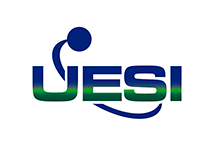New Orleans is defined by water. From the Mississippi River to the intricate network of canals and coastal wetlands, its infrastructure is constantly exposed to challenging marine conditions. For bridges, levees, pipelines, and flood-control structures, ROV inspection services are an essential tool to monitor integrity without putting human divers at risk. Yet these advanced underwater evaluations bring their own set of concerns. Understanding the risks for ROV infrastructure inspection services in New Orleans is critical for asset owners, contractors, and municipal agencies striving to safeguard both investments and the delicate local ecosystem.
Operational & Technical Risks
ROV Entanglement
Every remotely operated vehicle is linked to its support vessel by a tether for power and data. In busy ports or strong river currents, that tether can snag on propellers, rudders, or submerged debris. Entanglement may damage the ROV, the vessel, or both, leading to costly repairs and project delays.
Communication and Control Issues
Underwater wireless signals are unreliable, so ROVs rely on cable-based communication. Heavy river traffic, electromagnetic interference, or simple cable fatigue can break the link. Loss of control mid-mission risks the vehicle itself and can leave a critical inspection incomplete.
Navigation in Turbid Waters
New Orleans’s waterways often have low visibility because of sediment and tidal mixing. For remote underwater visual inspections, this means sonar and lighting systems must work harder to capture clear images. Without proper calibration and experienced pilots, navigation errors or missed defects become more likely.
Equipment Malfunction
Like any complex mechanical system, ROVs can suffer thruster failures, camera issues, or sensor faults. When an inspection is tied to a tight maintenance window or regulatory deadline, even a minor malfunction can create major scheduling and cost overruns.
Economic & Contractual Risks
High Initial Investment
Top-tier ROV technology capable of handling New Orleans’s currents and silt is expensive. Smaller contractors may hesitate to invest, which can limit competition and push inspection prices higher for infrastructure owners.
Low Return on Long-Term Planning
Municipal budgets and private contracts sometimes favor short-term savings over life-cycle maintenance. This reduces incentives to schedule regular subsea ROV surveys, even though preventive inspections ultimately save money by avoiding catastrophic failures.
Data & Reporting Risks
Data Degradation
Motion blur from swift currents, sudden changes in illumination, or sensor noise can degrade image quality. If the resulting footage is unclear, engineers may misinterpret conditions or miss small but critical defects.
Inconsistent Reporting
One reason to use remotely operated vehicle evaluations is to reduce human subjectivity. Yet if the team processing the data lacks rigorous standards, final reports may vary in accuracy and completeness, complicating regulatory compliance and long-term asset management.
Environmental & Safety Risks
Containment Loss
Weather delays or unexpected equipment failures can postpone inspections. Prolonged gaps between surveys increase the risk of unnoticed corrosion or structural weakness, potentially leading to leaks or spills. In a city surrounded by sensitive wetlands, containment loss can trigger extensive environmental damage and costly remediation.
Corrosion and Structural Degradation
New Orleans’s brackish water and humid climate accelerate corrosion. Without timely inspections, steel and concrete elements can weaken, threatening bridges, floodwalls, and submerged pipelines.
Residual Hazards
ROVs protect divers from dangerous currents and aggressive wildlife, but equipment damage or sudden power failure can still disrupt port traffic or nearby industrial operations, creating secondary safety concerns.
Mitigating the Risks with Experienced Partners
Choosing the right partner dramatically reduces these risks. Underwater Engineering Services, Inc. (UESI) exemplifies how expert planning and technology integration safeguard New Orleans infrastructure.
- End-to-End Capabilities – UESI handles permitting, logistics, and detailed reporting. This comprehensive approach minimizes scheduling gaps that could delay inspections and heighten environmental risks.
- Advanced Technology – Their fleet supports high-resolution remote underwater visual inspections and subsea ROV surveys, equipped with multiple sensors to counter low visibility and data degradation.
- Skilled Personnel – UESI’s pilots and engineers are trained to manage tether deployment, communication protocols, and real-time data analysis. Their expertise helps prevent entanglement and ensures that remotely operated vehicle evaluations meet or exceed regulatory standards.
By integrating ROV inspection services with marine construction and commercial diving, UESI bridges the gap between data collection and immediate remediation. This not only protects infrastructure but also preserves New Orleans’s fragile coastal environment.
Dealing with Risks Related to ROV Inspection Services in New Orleans, LA
ROV technology allows New Orleans to inspect underwater assets efficiently and safely, but it is not risk-free. From tether entanglement and communication loss to data integrity issues and environmental hazards, the risks for ROV infrastructure inspection services in New Orleans are significant. Successful projects require more than advanced equipment—they demand experienced operators, comprehensive planning, and rigorous data management.
Partnering with seasoned providers like Underwater Engineering Services helps infrastructure owners navigate operational challenges, control costs, and maintain compliance with evolving regulations. With the right team and technology, remote underwater visual inspections, subsea ROV surveys, and detailed remotely operated vehicle evaluations can deliver reliable results while protecting both critical assets and the unique ecosystem that defines New Orleans.




